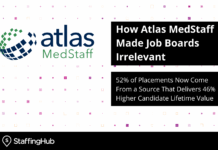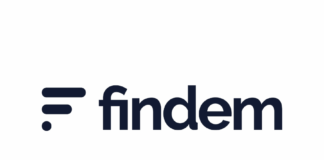
Staffing agencies have a unique role to play in the future of work. Now that the trend towards dispersed teams and virtual offices is here to stay, with nearly 75% of CFOs planning to remain remote for some of their workforce, agencies providing full-time and temporary staff to these businesses need to prepare for a new slate of challenges.
One of the biggest hurdles to streamlining work in the era of the remote employee is time and attendance tracking. When both company leaders and staff can rest assured that every hour or assignment is correctly logged and compensated, they both reap the rewards of increased productivity, optimal efficiency, and other benefits associated with remote work.
The agencies that can provide these capabilities to their clients will be at the forefront of the staffing industry’s expected 11% increase in 2021. While these improvements are still new for many staffing companies, there are clear, manageable methods of optimizing the time and attendance tracking for the employees they manage in order to meet the rapidly changing needs of employers.
#1: Optimize time-tracking for homeworkers
The typical image of a remote employee working from their couch or bedroom isn’t the only reality for dispersed and virtual teams, but it is perhaps the environment most ripe for optimization. And while these employees were at the forefront of last March’s remote work experiment, the attitude of ‘as long as the work gets done’ is now giving way to a more data-driven approach to task management.
More specifically, staffing companies can utilize time tracking software in order to analyze several important metrics:
- Employee capacity, by comparing hours budgeted vs. hours worked
- Revenue, as expressed by the time spent working on a project vs. final profit
- Time utilization, shown by the amount billable vs. non-billable time per employee
These are certainly not the only areas ripe for analysis, but they are the KPIs that lend themselves to further insights. For example, knowing how an employee’s work hours compare with the initial estimated time to completion allows companies to retool their budgets and offer staff a chance to see their own productivity up close. This can help to reduce unpaid overtime for workers and opens up pattern analysis in work habits—an effective means of creating better productivity.
#2: Geofencing & GPS time tracking
Not every remote employee is a homeworker. Plenty of staffing agencies provide workers who visit multiple locations per day and who are paid for their time spent on each given job site. These employees have the same capability to log and report time virtually, but the means of doing so differs from homeworkers.
Enter geofencing, the technology that allows a company to start tracking time once an employee is on a given job site. These time-tracking applications can be set to automatically remind the employee to start the clock once they arrive at the job site, and do the same once they leave, ensuring the hours billed are accurate to the work completed.
These detailed reports can be integrated with payroll for more effective cost savings. Of course, geofencing capabilities should be implemented with a focus on privacy. Employees can remain assured that these applications only utilize location data while workers are on the clock, and that they have the option to clock in and out following an alert, rather than being clocked in themselves. By implementing geofencing in a way that’s equitable to employer and employee, staffing agencies can provide on-time service with accurate task tracking.
#3: App-based tracking upgrades
Geofencing is just one example of an upgrade from pen-and-paper task tracking. The use of applications in time management has grown alongside the proliferation of smartphones and will likely continue to be a source of productivity gains for staffing companies.
The expansion in the number of apps, however, can overwhelm agencies due to the sheer amount of choice. Therefore, decision makers should approach time-tracking applications based on the following criteria:
- Integrations. An application that works with other software, such as payroll, boosts the potential efficiency for workers and staffing agency employees alike.
- Monitoring. Some applications only track time—others provide insights into what applications or web pages workers are using while they’re on the clock. The extent of employee monitoring will vary by task and industry.
- Cost. There are free applications in the time tracking space, although they provide limited functionality compared to their paid competitors. It’s up to the decision makers within a staffing firm to decide what the appropriate cost should be based on expected value.
- Features. In addition to geofencing and GPS tracking, modern applications can also offer budgeting, invoicing, and timesheet exporting features in a variety of file types. These, as well as other upgrades, can be useful for agencies looking for an all-in-one-solution to task management.
#4: Task tracking vs. time tracking
As staffing agencies look ahead to a more holistic version of their workflow management, task tracking may begin to rise in prominence alongside time tracking. While the latter is still the industry standard across most types of workplaces, task tracking will no doubt grow in popularity as more and more businesses use arm’s length resources to fulfill specific functions within their workflows.
Rather than looking at the granular hour-to-hour workflows of staff, task tracking analyzes the project needs of a team or company across weeks, months, or years. The two tracking methods work best in tandem, with data from time tracking software informing decisions and assignments for task tracking.
The implementation of task management requires breaking work down into its essential components, as well as matching the right workers to individual assignments. This is the central efficiency challenge staffing agencies will face in the coming years. Yet by leveraging the capabilities of time tracking apps to provide data, optimize budgets, and create trust between all parties, staffing agencies can easily meet the challenge, no matter if staff are on-premises, remote, or hybrid.
 Written by Adam Day, President & CEO at Time Rack, a time and attendance and HR services company that provides COVID return-to-work-safely services for businesses across a broad range of industries and workplace settings.
Written by Adam Day, President & CEO at Time Rack, a time and attendance and HR services company that provides COVID return-to-work-safely services for businesses across a broad range of industries and workplace settings.





